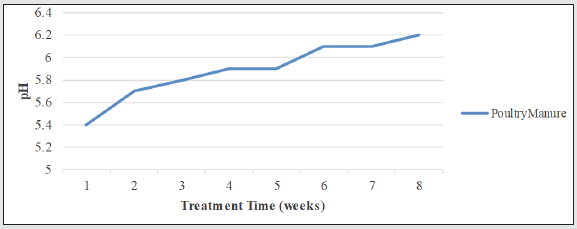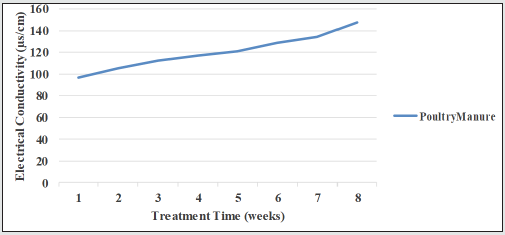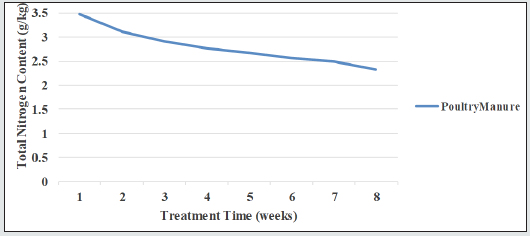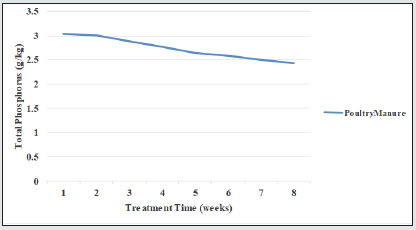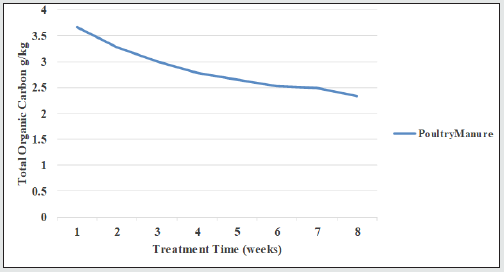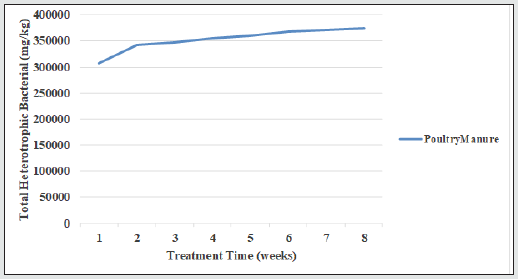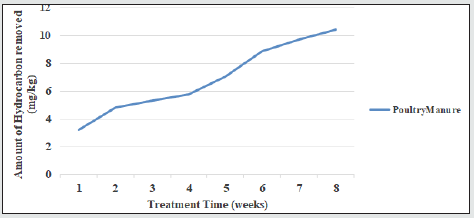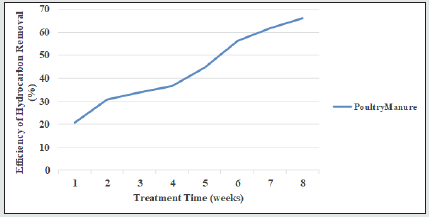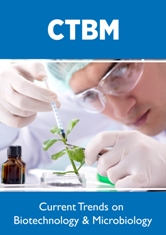
Lupine Publishers Group
Lupine Publishers
Menu
Research Article(ISSN: 2641-6875) 
Biostimulation of Diesel Polluted Soil using Poultry Droppings Volume 2 - Issue 3
Onaiwu DO1 and Ilaboya IR2*
- 1Department of Petroleum Engineering, Faculty of Engineering, University of Benin, Nigeria
- 2Department of Civil Engineering, Faculty of Engineering, University of Benin, Nigeria
Received:August 16, 2021; Published:September 27, 2021
*Corresponding author: Ilaboya IR, Department of Civil Engineering, Faculty of Engineering, University of Benin, Benin City, Edo State, Nigeria
DOI: 10.32474/CTBM.2021.02.000139
Abstract
Biostimulation is a form of bioremediation that involves the optimization of soil conditions such as pH, moisture, oxygen etc. to improve pollutant degradation. It embodies the introduction/ addition of nutrients to aid microbial growth. The impact of diesel pollution on the physicochemical properties of soil and the effects of remediation using poultry droppings was investigated. Sample soil, polluted with diesel was simulated in a single bio-treatment unit. Before contamination, the soil sample was characterized after digestion (using 1:1 ratio of 0.25M hydrochloric acid and Nitric acid) to determine the intrinsic properties of the soil. For effective treatment, a 2:1 mixture (w/w) of the polluted soil and the substrate in addition to 25ml of nutrient agar was utilized. The physicochemical properties of soil and rate of pollutant degradation after remediation was monitored for a period of 8 weeks. The initial total heterotrophic bacterial (THB) present in the experimental soil at week 1, was 2.44×105 cfu/g. The total heterotrophic bacterial after bioremediation was 3.74×105 cfu/ g. Also, the total hydrocarbon content (THC) decreased from an initial value of 7.89 mg/kg at week 1 to 2.67mg/kg at week 8. These results demonstrate the effectiveness of poultry droppings as a potent remediation tool for diesel polluted soil.
Keywords: Biostimulation; Diesel Polluted Soil; Poultry Droppings; Total Heterotrophic Bacterial and Total Hydrocarbon Contenta
Introduction
As civilization/development have remained on the increase, and population explosions have continued to occur; more pressure has been placed on energy sources especially on petroleum hydrocarbons. The petroleum industry has thus ranked as one of the major culprits of environmental pollution and degradation because of the huge demands for and large-scale use of petroleum hydrocarbons as an energy source in transportation, agriculture, power generation industries etc. Petroleum environmental pollution and contamination thus happens as a result of exploration, production and maintenance activities as well as transportation, storage, accidental and even deliberate release of petroleum, leading to severe environmental/ ecological impact [1]. Diesel contains low molecular weight compounds and high proportion of saturated hydrocarbons that are usually more toxic than long chained hydrocarbons. Diesel pollution is on the increase in Nigeria, as well as other developing countries [2].
The increase use of diesel generators has increased the consumption which invariably results in diesel contamination of soil and water bodies when such generators are serviced, and the oil is discarded carelessly in the environment. This often results in distortion of soil physical, biological and chemical properties [3]. Over the years, various techniques have been introduced to address and clean-up hydrocarbon pollution. Such methods include: physical remediation, chemical remediation, phytoremediation, thermal remediation and bioremediation. Bioremediation is a process that utilizes the natural biological activity of micro-organisms or enzymes to transform the toxic petroleum components into less toxic or harmless metabolites [4]. Bioremediation involves two processes: Biostimulation and Bioaugmentation. Biostimulation is the degradation of Petroleum hydrocarbons by the addition of nutrients to the soil, in the form of inorganic fertilizers, decayed organic matter such as animal droppings or compost to stimulate the growth of indigenous micro-organisms [5].
Generally, the advantages in the use of biostimulation techniques include: massive improvement in efficiency of the process in breaking down harmful substances due to the increased rate of growth of microorganisms present; the speed of reduction of the toxic particles in the area is relatively quick. Also, the process offers no disturbances to the natural ecosystem of the environment [6]. The need for cheaper and more environmental or eco-friendly methods to mitigate petroleum hydrocarbon pollution and its impact has continually been an objective of the Petroleum Industry. A lot of research has thus continued to be executed not just to meet the need of hydrocarbon cleanup, but also proffer effective solutions [by being environmentally friendly and maximizing hydrocarbon recovery rates; as well as being cost-efficient etc.]. The study is therefore aimed at providing information/ investigating the potential of poultry droppings in the bioremediation of diesel polluted soil.
Experimental Procedure
Samples Collection
The soil sample used for this research work was collected from the top surface soil (0-15 cm) in the Faculty of Engineering, behind Petroleum Engineering building, University of Benin, Benin City; using a trowel. Poultry droppings were collected from a private poultry farm situated in Benin City, Edo state. APG- was obtained from a Petroleum marketing station in Benin City, Edo state.
Sample preparation, simulation and amendment
The sample soil was air dried for approximately one week, homogenized and passed through 2mm pore size sieve and was stored in black polyethylene bag prior to use. 2:1 mixture of the soil and the diesel was obtained in a plastic bucket. The mixture was properly mixed, covered with a layer of aluminum foil paper and left for four days to stabilize before commencement of treatment. Afterwards, for effective treatment, a 2:1 mixture (w/w) of the polluted soil and the substrate in addition to 25ml of nutrient agar was utilized [7]. The plastic container and its content were open throughout the period of experimentation to allow for the influence of atmospheric oxygen.
Soil characterization/ physicochemical analysis
Before contamination, the soil sample was characterized after digestion (using 1:1 ratio of 0.25M hydrochloric acid and Nitric acid) to determine the intrinsic properties of the soil. Some of the properties of interest include [8]: total heterotrophic bacterial (THB), pH, electrical conductivity, total hydrocarbon content (THC), total, organic carbon (TOC), total phosphorous (TP), total nitrogen (TN). After contamination, the hydrocarbon polluted soil sample was again subjected to chemical digestion using 1:1 ratio of 0.25M hydrochloric acid and nitric acid. Thereafter, the polluted soil was characterized to determine the same physicochemical properties enumerated as above.
Analysis of treated soil samples
The entire experiment lasted for a period of eight (8) weeks. Single sample were collected for analysis on weekly basis and the sample mean and standard deviation was computed to ascertain the rate of hydrocarbon degradation with treatment time. Analysis of the treated soil was aimed at evaluating the overall effects of treatment on the initial conditions of the soil after pollution. As stated above, physicochemical properties such as total heterotrophic bacterial (THB), pH, electrical conductivity, total hydrocarbon content (THC), total, organic carbon (TOC), total phosphorous (TP), total nitrogen (TN) were also evaluated weekly.
Efficiency of remediation
The amount of hydrocarbon removed during the series of batch investigation was determined using the mass balance equation of the form

Where: q, defines the hydrocarbon uptake (mg/g); C0 and Ce: are the initial and equilibrium hydrocarbon concentrations in the digested soil solution [mg/l] respectively; V: is the weight of soil sample taken (g) and M: is the mass of substrate used (g).
The efficiency of hydrocarbon removal (%) was calculated using the mass balance equation of the form

Results and Discussion
Effects of Hydrocarbon Pollution on Soil Properties
The addition of diesel to the unpolluted experimental soil resulted in the contamination of the soil which invariably altered the initial physico-chemical properties of the soil. The result of subsequent changes in the soil physico-chemical properties induced by the addition of diesel is presented as shown in Table 1. Results of Table 1 revealed that, the addition of diesel to the soil altered the initial properties of the soil in various ways. The soil became highly acidic as the pH changes from the initial alkaline state of 8.3 to an acidic state of 3.56. Increased level of conductivity was also noticed, as well as a relatively drastic reduction in total nitrogen and total organic carbon concentration due a sudden increase in the hydrocarbon content of the soil brought about by contamination. Furthermore, the addition of diesel to the soil resulted in a severe reduction in the total heterotrophic bacterial count from 8×105cfu/g to 2.44×105cfu/g due to pollution. The soil contamination was observed to produce/ induce a slight Lead presence while the original Iron content experienced a slight increase as well.
Effects of remediation on soil properties
The polluted soil samples were collected on a weekly basis and the result was utilized in evaluating the effect of treatment time and the progress of remediation. The progress of remediation was assessed based on change in the concentration of selected variables with treatment time. These variables include pH, electrical conductivity, total organic carbon, total nitrogen, total phosphorus, total hydrocarbon content, and total heterotrophic bacterial count. Results of the progress of remediation is presented in Table 2.
Effects Of Remediation on pH
Result of Table 2 reveals that there was a sharp increase in the pH of the sample after week 1, after which, there followed a steady increase of the pH as presented in Figure 1. The pH of the sample increased from 3.56 to 5.4 after week 1. The few weeks after, show a steady increase of pH, finally stabilizing at 6.2 by week 8. This result agrees with the report of Obasi et al, [9] who observed that the addition of poultry manures to the crude oil polluted soils slightly raised the soil pH. The pH which is the degree of acidity or alkalinity of soil affects not only the physicochemical properties but also the flora and fauna of soil. Thus, it determines the availability of many nutrients for plant growth and maintenance [9]. According to Williams et al, [10], diverse microorganisms capable of catabolizing petroleum hydrocarbons were shown to be present in poultry litter, this pooled culture was shown to utilize diesel fuel as its primary source of energy for growth and metabolism. Furthermore, the research work which encompassed four biotreatment units with varying poultry litter concentrations; theorized that, the increase in pH observed was anticipated due to the soil buffering effect resulting from a high litter concentration.
Effects Of Remediation on Electrical Conductivity
Results obtained for electrical conductivity, reflect a continuous increase in the electrical conductivity of the treatment sample as presented in Figure 2. According to [11]; such increasing trend in the electrical conductivity observed could be as a result of substantial reduction in hydrocarbon concentration; thereby providing a polar environment for the soil ions which accounted for the increased conductivity.
Effects Of Remediation on Total Nitrogen Content (TNC)
It was observed that; there was a steady decrease in the total nitrogen content (TNC) throughout the entire period of experimentation as observed in Figure 3. The total nitrogen Content (TNC) reduced from the initial 4.66 g/kg to 2.33 g/kg. The result obtained is in agreement with that of Williams et al, [10] who reported a decrease in a remediation mixture with 20% concentration of poultry droppings. However, in the research work conducted by Oludele et al, [12], it was reported that there was a progressive increase in the nitrogen content from the zero week to the sixth week of remediation with the value of 0.04-0.12 (mg/kg) in nitrogen. According to this report, this was possible because the microbes present in the chicken manure found food (hydrocarbons) to feed on in the soil thereby increasing in population, precipitating an increase in soil properties such as nitrogen content. Also, in a different research work by Obasi et al, [9]; total nitrogen content of the amended hydrocarbon polluted soils were significantly higher than those of the un-amended soils. This increase in the percentage nitrogen may be as a result of anthropogenic inputs of these nutrients from organic manure because organic manures have been reported as being capable of increasing soil nutrients by supplementing the limiting nutrients [13-15].
Effects Of Remediation on Total Phosphorus (TP)
It was noted from the results of table 2 that, there was as well, a gradual decline in the Total Phosphorus (TP) throughout the entire period of experimentation as observed in Figure 4. The Total Phosphorus reduced from 3.29 g/kg to 2.44 g/kg. The obtained result corresponded with the result presented by Williams et al, [10] who indicated that, in remediation mixtures of diesel polluted soil, with 1% poultry litter concentration respectively, there was an unstable decrease in the phosphorus content of the sample. The result stated above is in contradiction to the research work conducted by [12]. This research work reported that there was a progressive increase from the zero week to the sixth week of remediation in the properties of the soil with the value of 1.72-6.73 (mg/kg) in phosphorous. It further posited that just as in the case of the reported increase in nitrogen content, the phosphorus content increased because the microbes present in the poultry waste fed on the hydrocarbons, thereby increasing in population and thus inducing an increase in the phosphorus content of the sample soil.
Effects of remediation on total organic carbon (TOC)
Also, there was a gradual decrease in the total organic carbon (TOC) throughout the entire period of experimentation as observed in Figure 5. The total organic carbon (TOC) reduced from 4.38g/ kg to 2.33g/kg. This result was in concurrence of that obtained by Osuji et al, [16]. The reduction in TOC was possibly attributed to the gradual utilization of this nutrient by the microorganisms present in the system for growth and development. However, in a different study which explored the effects of spilled hydrocarbons on soil, the reduction of TOC was accounted for by stating that; perhaps the spilled-petroleum impaired the metabolic processes that would have facilitated the agronomic addition of organic carbon from the petroleum hydrocarbons by reducing the carbon-mineralizing capacity of the microflora [16].
Effects of remediation on total heterotrophic bacterial (THB)
It was observed from result of Table 2 that the initial total heterotrophic bacterial present in the experimental soil was 2.44×105 cfu/g. The total heterotrophic bacterial after bioremediation was 3.74×105 cfu/ g which indicated an increase in the population of hydrocarbon utilizing microorganisms in the system as presented in Figure 6. The increasing trend of the total heterotrophic bacterial is in concurrence with the report of [10]. This increase in the population of the total heterotrophic bacterial is not unexpected as the general process of biostimulation involves and requires the proliferation or propagation of the residual hydrocarbon feeding microbes in the remediation sample.
Effects Of Remediation on Total Hydrocarbon Content (THC)
It was observed during the entire period of experimentation as shown in Figure 7 that the total hydrocarbon content (THC) decreased steadily for the substrate (poultry droppings) used. The THC decreased from an initial value of 7.89 mg/kg to 2.67mg/kg. This reduction in THC of poultry manures amended soils is in line with the reports of Tanee and Kinako (2008) [15] who observed significant loss in the THC of poultry manure amended soil. The obtained result is also in agreement with the research of Obasi et al, [9] who reported significant decrease in THC with poultry manure amended soil. According to [17]; organic manures have effect in stimulating hydrocarbon degradation by increasing the total heterotrophic microbial growth and activity.
Efficiency Of Remediation
The graphical variation between the amount of petroleum hydrocarbon degradation and the efficiency of bioremediation with treatment time for the substrate used (Poultry droppings) is presented as in Figures 8 and 9 respectively: The results, which show a steady increase in the amount and efficiency of hydrocarbon removal with treatment time further support the potential of poultry droppings a good substrate for the treatment of hydrocarbon polluted soil.
Conclusion
Diesel contamination affected soil physicochemical properties such as pH, conductivity, total heterotrophic bacterial (THB), total hydrocarbon content (THC), total, organic carbon (TOC), total phosphorous (TP), total nitrogen (TN) which are important indicators for determining soil quality and productivity. Poultry droppings provides nutrients for microbial growth and activities and thus supports the remediation of diesel polluted soil. After 8 weeks of treatment, a total removal of 66% of hydrocarbons was obtained. Thus, from the research result and analysis, it was observed that the use of nutrient agar and poultry droppings on diesel polluted soils highly facilitates the rate of hydrocarbon degradation.
References
- Fowzia A, Fakhruddin ANM (2018) A Review on Environmental Contamination of Petroleum Hydrocarbons and its Biodegradation. International Journal of Environmental Science and Natural Resources 11(3): 555- 811.
- Stephen E, Okolo MO, Akogu EA (2011) Microbiological properties of oil impacted soil 36 months after diesel spill. International Journal of Education, Science, Mathematics and Environmental Studies 3(1): 77- 82.
- Stephen E, Usman AS, Okolo MO, Akogu EA Abioye OP (2013) Microbiological and physiochemical properties of Diesel simulated soil. FUTA Journal of Research in Sciences 1: 82- 86.
- Abha S, Singh CS (2012) Hydrocarbon Pollution: Effects on Living Organisms, Remediation of Contaminated Environments, and Effects of Heavy Metals Co-Contamination on Bioremediation. In: Dr. Romero-Zerón L (edn). Introduction to Enhanced Oil Recovery (EOR) Processes and Bioremediation of Oil Contaminated Sites. In Tech :185-206.
- Zhu X, Venosa AD Suidan MT (2004) Literature Review on the Use of Commercial Bioremediation Agents for Cleanup of Oil-Contaminated Estuarine Environments. United States Environmental Protection Agency: 61.
- Srivastava M, Srivastava A, Yadav, A Rawat V (2019) Source and Control of Hydrocarbon Pollution.
- Agamuthu P, Dadrasnia A (2013) Potential of bio-wastes to remediate diesel, fuel contaminated soil. Global NEST Journal 15(4): 474- 484.
- Ayotamuno MJ, Kogbara RB, Agunwamba JC (2006) Bioremediation of a petroleum-hydrocarbon polluted agricultural soil at various levels of soil tillage in Port Harcourt Nigeria. Nigerian Journal of Technology 25(1): 45 - 51.
- Obasi AN, Eze E, Anyanwu DI, Okorie UC (2013) Effects of organic manures on the physicochemical properties of crude oil polluted soils. African Journal of Biochemistry Research 7(6): 67-75.
- Williams CM, Grimes JI Mikkelsen RI (2019) The Use of Poultry Litter as Co-Substrate and Source of Inorganic Nutrients and Microorganisms for the Ex-Situ Biodegradation of Petroleum Compounds. Poultry Science 78(7): 956- 964.
- Akpoveta OV, Egharevba F, Medjor OW (2011) A pilot study on the biodegradation of hydrocarbon and its kinetics on kerosene simulated soil. International Journal of Environmental Sciences 2 (1): 34-43.
- Oludele OE, Ogundele DT, Odeniyi K, Shoyode O (2019) Crude oil polluted soil remediation using poultry dung (chicken manure). African Journal of Environmental Science and Technology 13(10): 402- 409.
- Mbah CN, Nwite JN, Okporie OE (2006) Effect of organic wastes on some chemical properties and productivity of spent oil polluted ultisol in Abakaliki, Nigeria. Niger J Trop Agriculture 8: 51-56.
- Mbah CN, Nwite JN, Nweke IA (2009) Amelioration of spent oil contaminated ultisol with organic wastes and its effect on soil properties and maize (Zea mays L) yield. World J Agric Sci 5(2): 163- 168.
- Tanee FBG, Kinako PDS (2008) Comparative Studies of Biostimulation and phytoremediation in the mitigation of crude oil toxicity in tropical soil. J Appl Sci Environ Manage12(2):143 - 147.
- Osuji LC, Nwoye I (2007) An appraisal of the impact of petroleum hydrocarbons on soil fertility: The Owaza experience. African Journal of Agricultural Research 2(7): 318- 324.
- Lee K, Tremblay GH, Cobanli SE (1995) Bioremediation of oil beach sediments: Assessment of inorganic and organic fertilizers. Proceedings of 1995 Oil Spill Conference. American Petroleum Institute Washington DC.

Top Editors
-

Mark E Smith
Bio chemistry
University of Texas Medical Branch, USA -

Lawrence A Presley
Department of Criminal Justice
Liberty University, USA -

Thomas W Miller
Department of Psychiatry
University of Kentucky, USA -

Gjumrakch Aliev
Department of Medicine
Gally International Biomedical Research & Consulting LLC, USA -

Christopher Bryant
Department of Urbanisation and Agricultural
Montreal university, USA -

Robert William Frare
Oral & Maxillofacial Pathology
New York University, USA -

Rudolph Modesto Navari
Gastroenterology and Hepatology
University of Alabama, UK -

Andrew Hague
Department of Medicine
Universities of Bradford, UK -

George Gregory Buttigieg
Maltese College of Obstetrics and Gynaecology, Europe -

Chen-Hsiung Yeh
Oncology
Circulogene Theranostics, England -
.png)
Emilio Bucio-Carrillo
Radiation Chemistry
National University of Mexico, USA -
.jpg)
Casey J Grenier
Analytical Chemistry
Wentworth Institute of Technology, USA -
Hany Atalah
Minimally Invasive Surgery
Mercer University school of Medicine, USA -

Abu-Hussein Muhamad
Pediatric Dentistry
University of Athens , Greece

The annual scholar awards from Lupine Publishers honor a selected number Read More...






